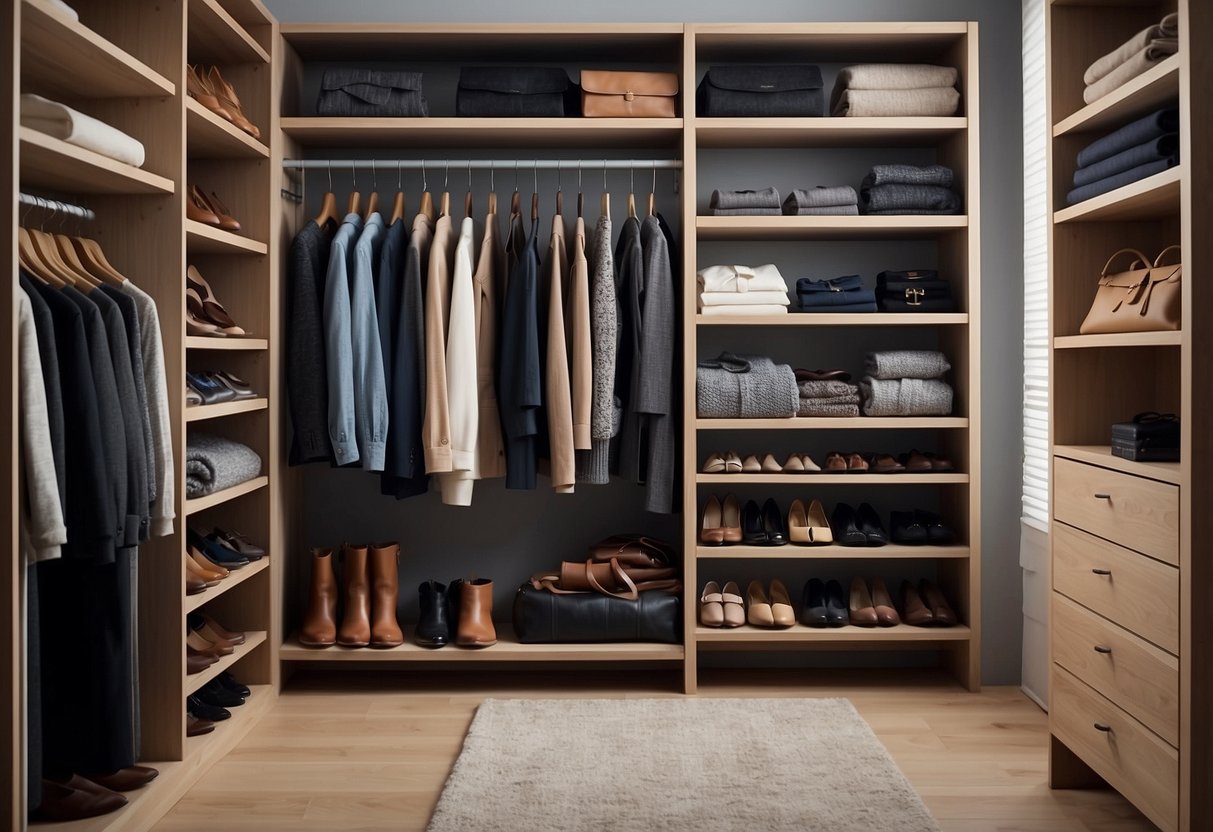
Essential Elements of a Capsule Wardrobe

A capsule wardrobe combines a minimalist approach with versatility, creating a streamlined collection that maximizes outfit options with fewer pieces.
Neutral Colors Palette
Neutral colors form the foundation of a capsule wardrobe. This includes colors like black, white, grey, navy, and beige. These colors are highly versatile and can be easily mixed and matched, ensuring that every piece works well with the others.
Choosing neutral shades allows for a cohesive look and reduces the complexity of putting together outfits. Neutrals serve as a backdrop for any statement pieces, making them more flexible. Sticking to a neutral palette enhances the wardrobe’s longevity, as these colors tend to remain in style longer.
Quality Over Quantity
Focus on quality rather than quantity when building a capsule wardrobe. Investing in well-made pieces ensures they will last longer and maintain their appearance through repeated wear and washing. This means fewer clothing items and less hassle with frequent replacements.
Selecting high-quality fabrics like cotton, wool, and silk also contributes to comfort and durability. Well-constructed garments with proper stitching and finishing will outlast fast-fashion alternatives, providing better value over time. Quality clothing often feels better to wear, offering improved fit and comfort, which can elevate everyday dressing.
Versatile Pieces
Key to a successful capsule wardrobe are versatile pieces that can be styled in multiple ways. Think classic items like a tailored blazer, a little black dress, well-fitting jeans, and crisp white shirts. These pieces can transition from casual to formal settings with ease, simply by altering accessories or layering.
Versatile items often have simple, clean lines and minimal embellishments, allowing them to adapt to various looks. The ability to mix and match these pieces means creating numerous outfits from a limited selection, making dressing simpler and more efficient. This flexibility in styling underscores the practicality of the capsule wardrobe concept.
Determining Your Personal Style
Identifying your personal style involves examining your existing wardrobe, understanding your body shape, identifying suitable colors, and considering your lifestyle and clothing needs.
Analyzing Your Current Wardrobe
Start by taking a close look at what you already own. He should identify pieces that he frequently wears and feels comfortable in. Are there recurring themes, such as certain colors or patterns? It is essential to note which items are rarely worn and consider why. This will help him understand his preferences.
She may sort her clothes into categories like workwear, casual outfits, and special occasion pieces. Analyzing the wardrobe this way provides a clearer view of any gaps or excesses. It’s important to recognize what aligns with her taste and daily activities.
Understanding Body Shapes
Knowing one’s body shape is key to selecting flattering clothing. There are common body shapes such as pear, apple, hourglass, and rectangle. Each shape has different clothing recommendations that can enhance one’s appearance.
For instance, individuals with a pear-shaped body might prefer A-line skirts that balance their proportions. An apple-shaped person could focus on drawing attention upwards with V-neck tops. Understanding these nuances helps in choosing clothing that complements one’s figure, boosting confidence.
Color Theory Basics
Different colors can evoke various moods and complement different skin tones. He should experiment with a range of colors to see which suit him best. It’s useful to know concepts like warm and cool tones, as well as the impact of colors on personal presentation.
Certain colors can highlight features or create a slimming effect. She might notice that navy blue or black provides a sleek look, while brighter colors can make a statement. By identifying a palette that works well, she can create a cohesive and versatile wardrobe.
Current Lifestyle and Clothing Needs
Lifestyle plays a significant role in shaping a wardrobe. A professional working in an office setting might prioritize formal clothing, while a stay-at-home parent may focus on casual and practical outfits. Identifying daily activities helps in making appropriate clothing choices.
He should consider any upcoming changes, such as a new job or a move to a different climate, which may require adjustments to his wardrobe. By aligning clothing choices with daily needs and future plans, she ensures her wardrobe is functional as well as stylish.



